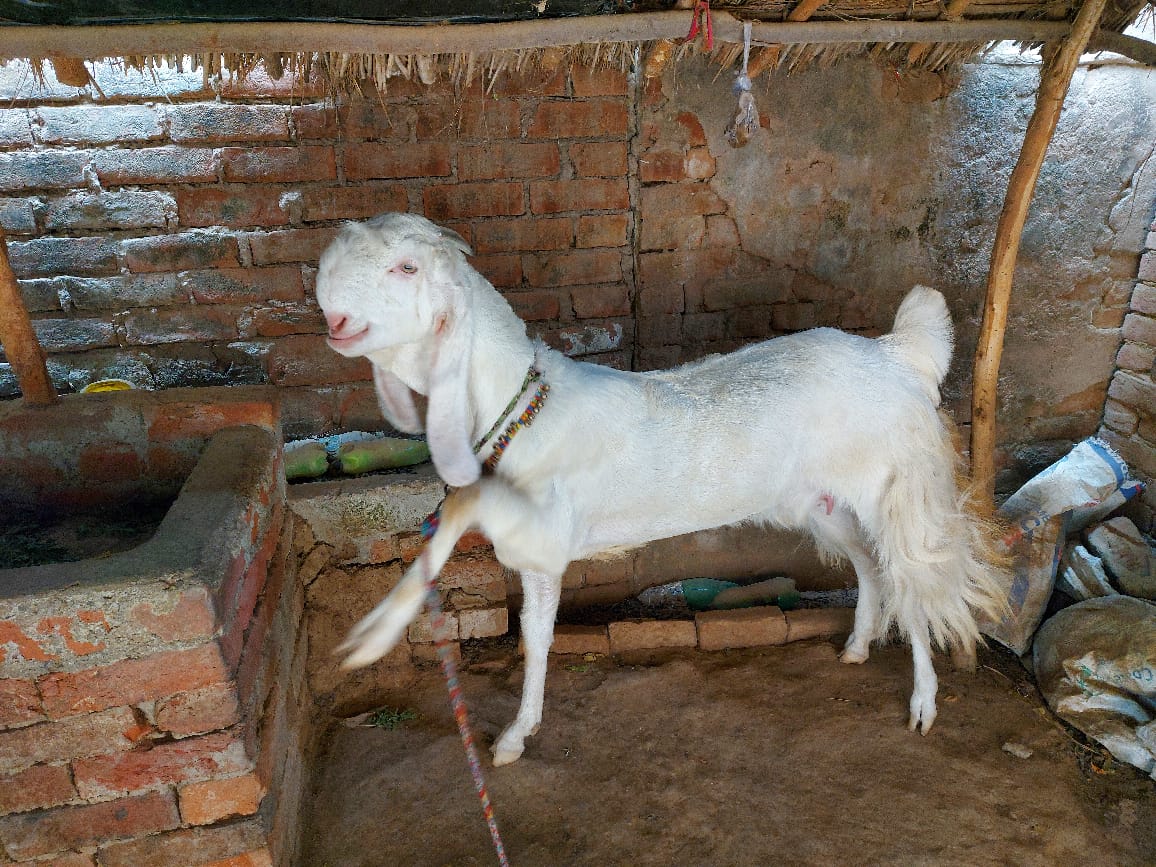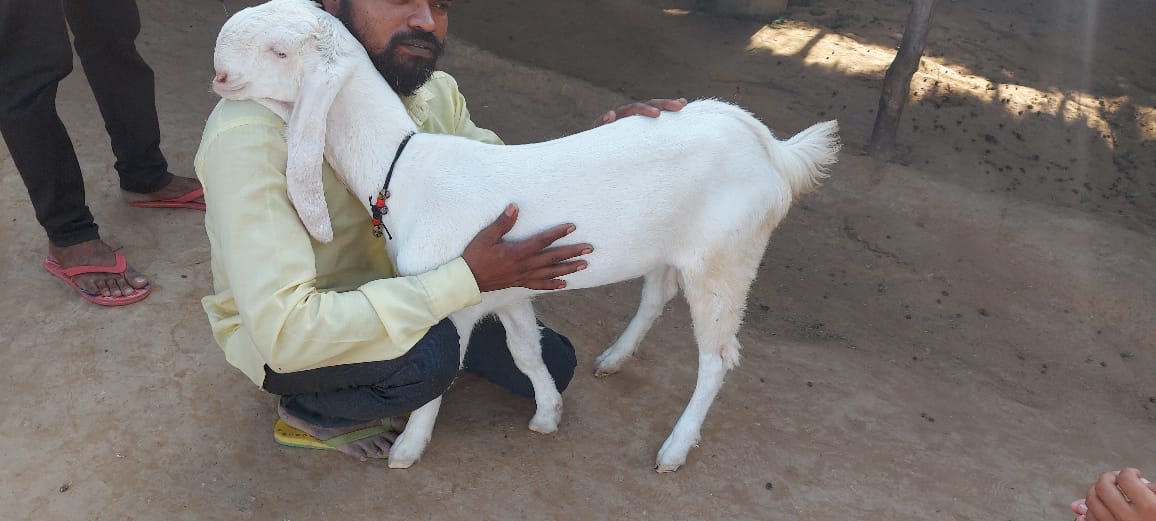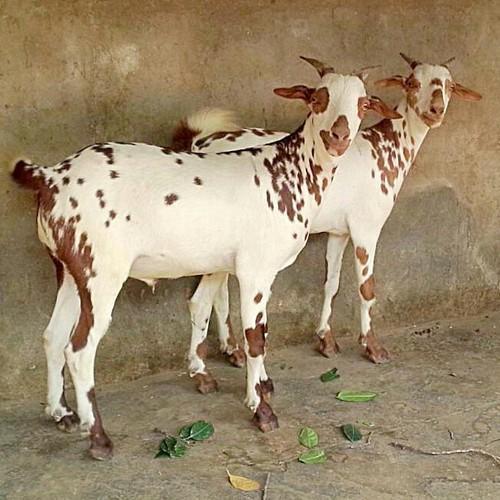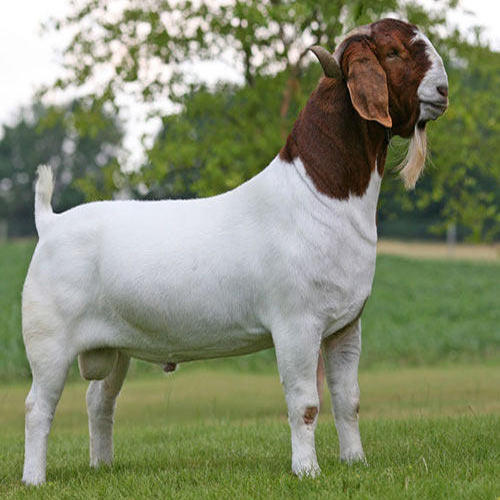
Jamnapari Breed
Jamnapari Breed
-
Jamnapari or Jamunapari is an Indian breed of domestic goat originating in the Etawah district of Uttar Pradesh.
-
It has been exported to Indonesia, where it is known as Etawa.

-
The name Jamnapari or Jamunapari is derived from the Yamuna river.
-
The color varies greatly but the typical Jamnapari is white with tan patches on the neck and head.
-
They have a highly convex nose on their head, which gives them a parrot-like appearance.
-
They have long flat hooked ears which are about 25 cm long.
-
The udder has round, conical nipples and is well developed.

-
They also have unusually long legs.
-
They also have the capacity to produce 2 to 2.5 kg of milk per day.
-
Jamnapari males can weigh up to 70 kg, while females can reach around 40 kg depending on climate and environmental conditions.
-
The average milk production has been found to be a little less than two kilograms per day. The amount of cholesterol in Jamnapari meat is low.
-
During the winter they spend more than 90% of their time grazing, although this drops to about 55% in the hot Indian summer.

-
Jamunapari goat breeds are mostly reared for milk and meat.
-
The breed browses on tops of shrubs, tree leaves and grass instead of the usual grazing.
-
Jamunapari thrives best in a variety of conditions with lots of shrubs for browsing.

-
The conception rate is high, around 90%. Triple and quadruple are common. The average age of first conception is 18 months
Blog Upload on - Oct. 8, 2021
Views - 15122












